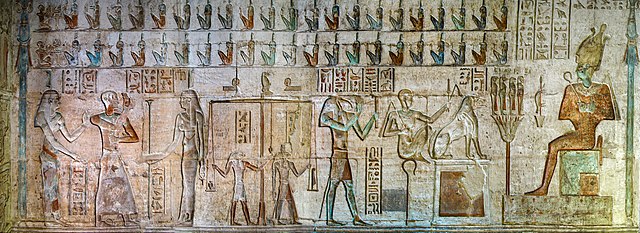Nehebkau was the primordial snake god in ancient Egyptian mythology. Although originally considered an evil spirit, he later functions as a funerary god associated with the afterlife. As one of the forty-two assessors of Ma’at, Nehebkau was believed to judge the deceased after death and provide their souls with ka – the part of the soul that distinguished the living from the dead.
Nehebkau depicted in Spell 87 of the Book of the Dead of Ani
An Ancient Egyptian representation of Nehebkau, houses in the Walters Art Museum and produced in the Third Intermediate Period. This representation has a human body and serpent head and tail. The knees are flexed and the hands are at the mouth.
A wooden figure of Nehebkau from the Ptolemaic period housed in the Metropolitan Museum of Art. He appears with a human body and snake head and tail, holding a Wedjat eye as a symbol of protection.
The Assessors of Maat were 42 minor ancient Egyptian deities of the Maat charged with judging the souls of the dead in the afterlife by joining the judgment of Osiris in the Weighing of the Heart.
Papyrus of Ani: some of the 42 Judges of Maat are visible, seated and in small size. British Museum, London.
All 42 Judges of Maat are depicted above this scene of psychostasia from the Temple of Hathor at Deir el-Medina. Each of them has on his head the ostrich feather of their mistress Maat.





